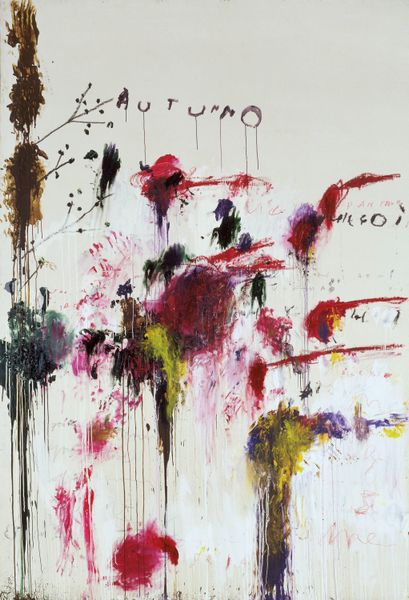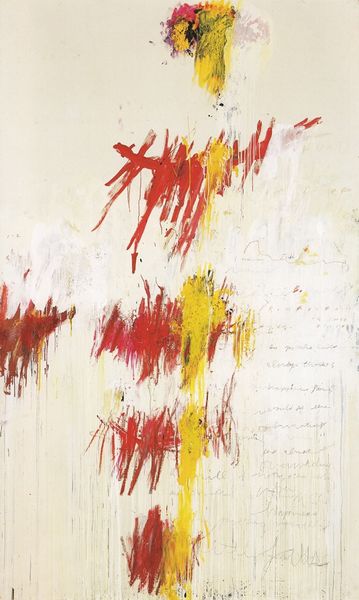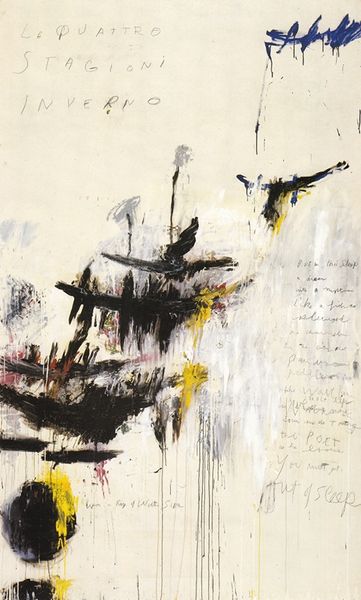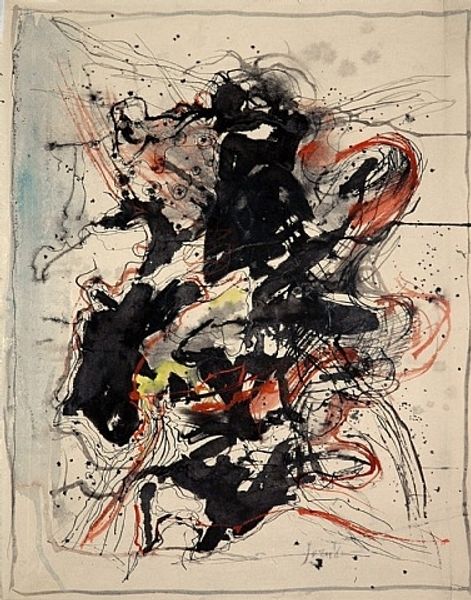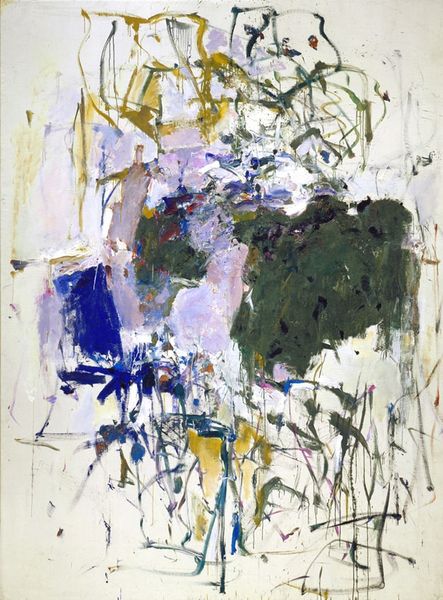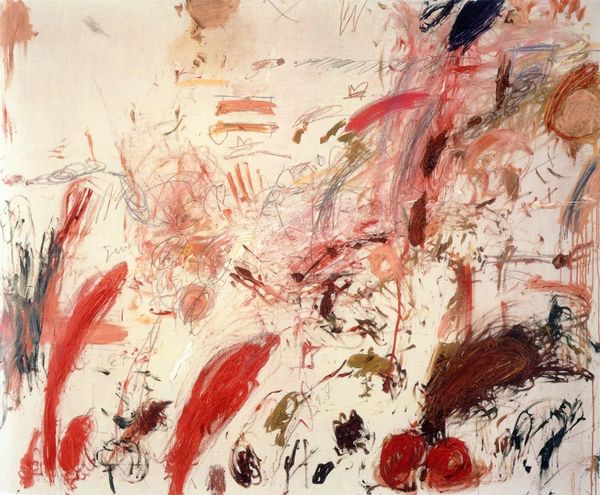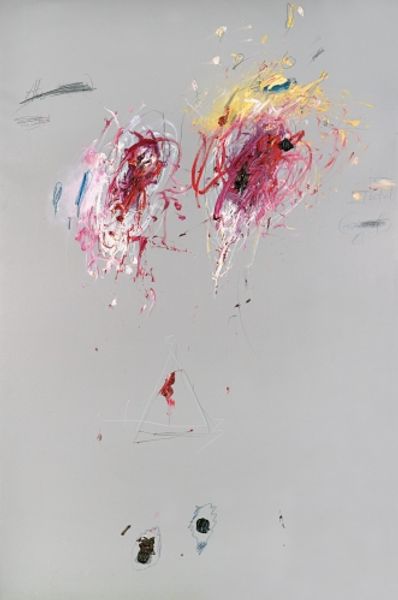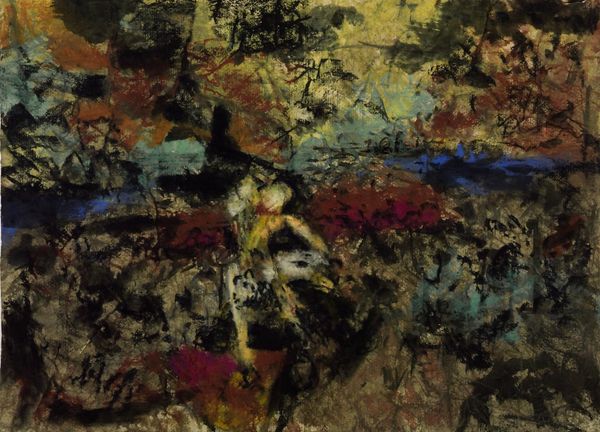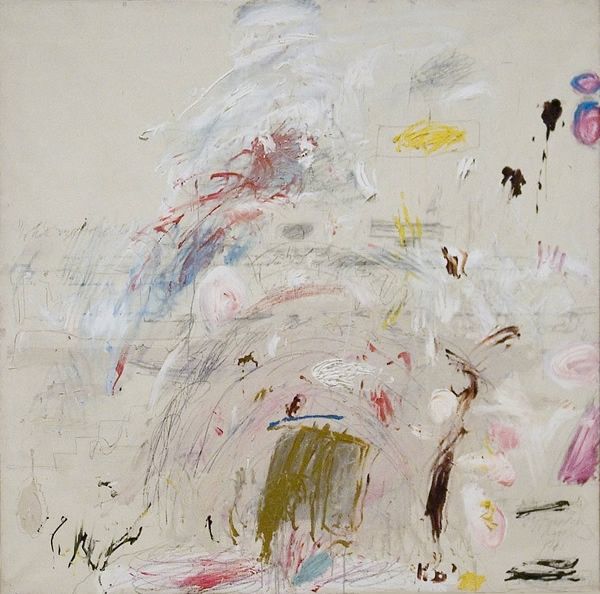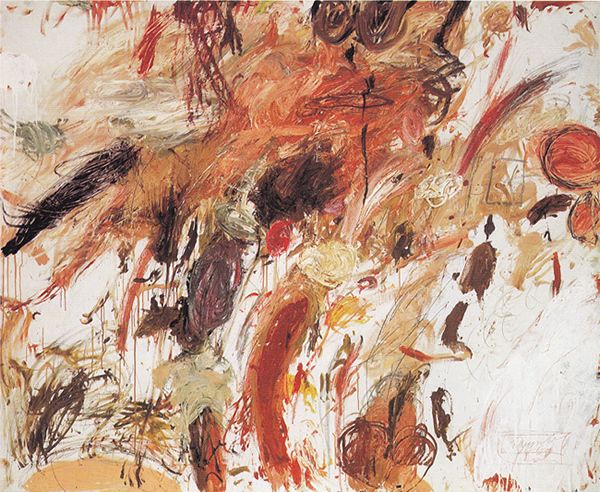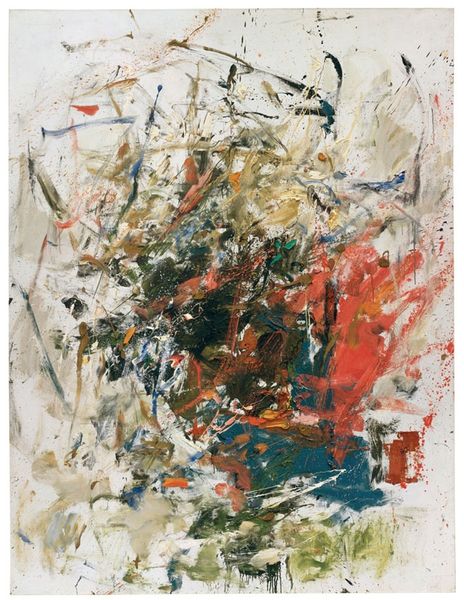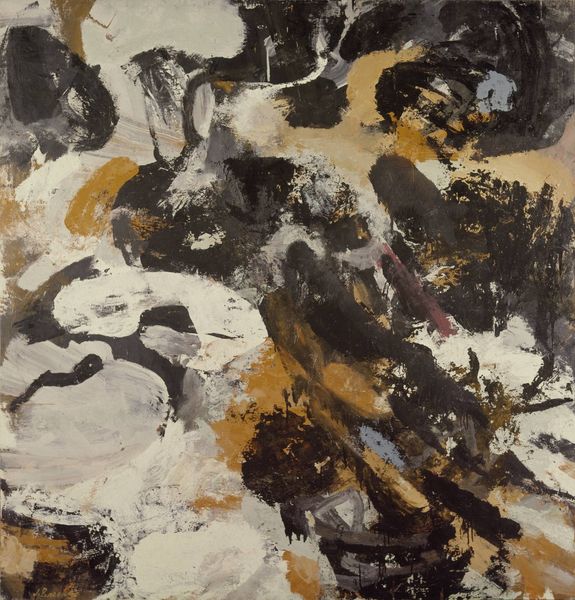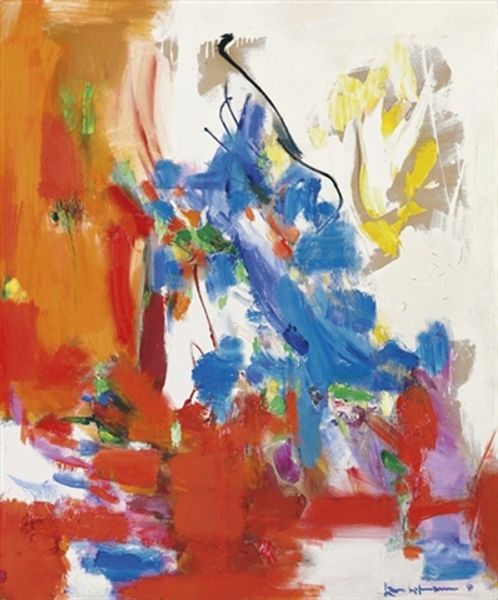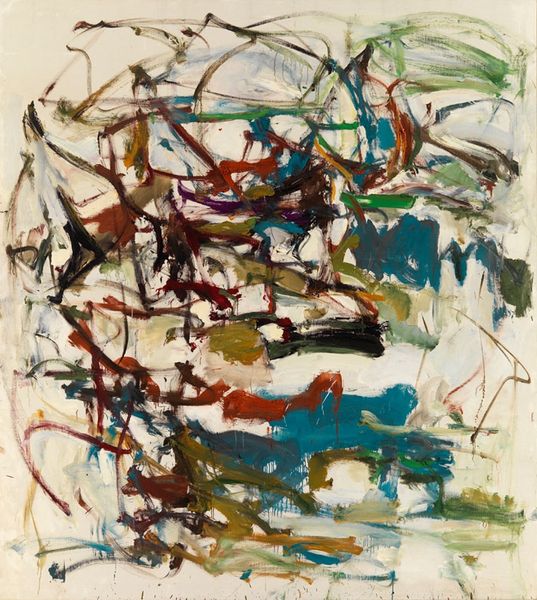
#
black-mountain-college
Copyright: Cy Twombly,Fair Use
Editor: Here we have Cy Twombly’s "Quattro Stagioni I. Autunno," created in 1994, with mixed media, oil paint, and drawing on canvas. I'm struck by its chaotic energy, and how it evokes the decay and vibrancy often associated with autumn. What are your thoughts on how the cultural moment might have impacted Twombly's creation of this piece? Curator: That’s a perceptive observation. It’s important to understand Twombly’s consistent engagement with classical themes filtered through a very modern sensibility. "Quattro Stagioni," specifically the "Autumn" panel, isn’t simply about depicting the season. How might this abstract approach be related to post-war anxieties or changing views towards grand historical narratives? Editor: Hmm, I guess moving away from traditional landscape painting could signal a distrust of established ways of seeing the world. Also, this move to abstraction feels rebellious somehow. Curator: Precisely. The scrawled text, the layered paint strokes, and the overall fragmented composition arguably reflect a broader societal questioning of established structures after the war. Consider also, the rising dominance of American Abstract Expressionism on the world stage during Twombly’s career and its effects on institutions, galleries, and the overall art market at that time. Editor: It's interesting to think about this seeming chaos as a reaction to or rejection of earlier forms of art. But I still struggle to link the individual emotions or statements to any wider feelings or ideas. Curator: And is the idea really chaos? Look at the carefully considered layering, the balancing of color fields. Consider it within a historical context, but also on its own terms, a visual poem perhaps more about feeling than objective representation. What institutions fostered this shift, and how did these new forms and markets reshape art? Editor: I see what you mean. Putting it in that historical context really deepens the work and makes it feel a bit less "random". The work doesn't need to give a specific meaning, as much as reflect how Twombly feels within history. Thank you! Curator: My pleasure. Analyzing through a socio-political lens allows us to understand the layers embedded in abstraction, seeing it not just as an aesthetic choice, but as a profound reflection of our collective past and present.
Comments
No comments
Be the first to comment and join the conversation on the ultimate creative platform.
